Contents
Excel ISNUMBER Function
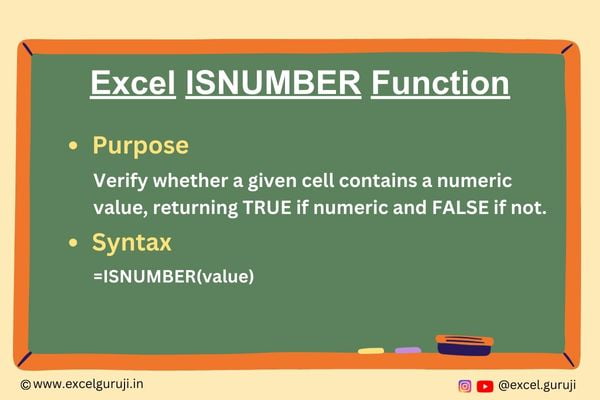
When to Use the Excel ISNUMBER Function in Excel
The ISNUMBER function in Excel is a valuable tool when you need to verify if a given cell contains a numeric value.
What Excel ISNUMBER Function Returns
The Excel ISNUMBER function returns a logical value, TRUE if the specified cell contains a numeric value, and FALSE if it does not.
Syntax of Excel ISNUMBER Function
The syntax of the Excel ISNUMBER function is straightforward:
=ISNUMBER(value)
Input Arguments
Here is the input argument for the Excel ISNUMBER function:
● value: The cell or expression that you want to check for numeric content. It can be a reference to a cell, a formula, or a numeric value.
Examples of the Excel ISNUMBER Function
Here are few examples demonstrating the usage of the ISNUMBER function in Excel:
Example 1: Basic Usage
Suppose you have a dataset in column A containing various types of data, and you want to identify which cells contain numeric values. In column B, use the following formula:
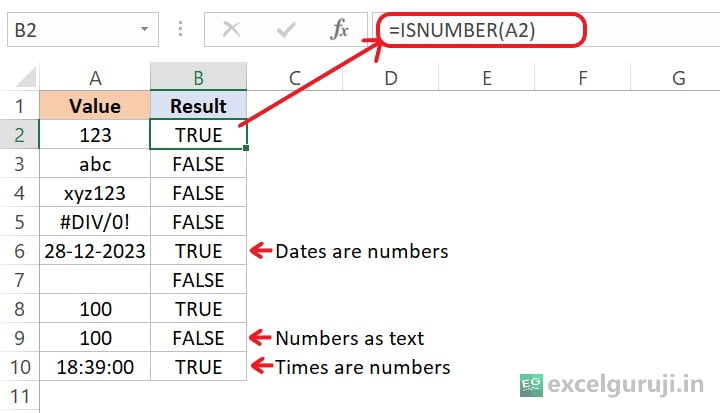
This formula will return TRUE if the value is numeric and FALSE if it is not.
Example 2: Combining with IF Function
You can integrate the ISNUMBER function with the IF function to create customized responses based on the numeric nature of the data. For instance:
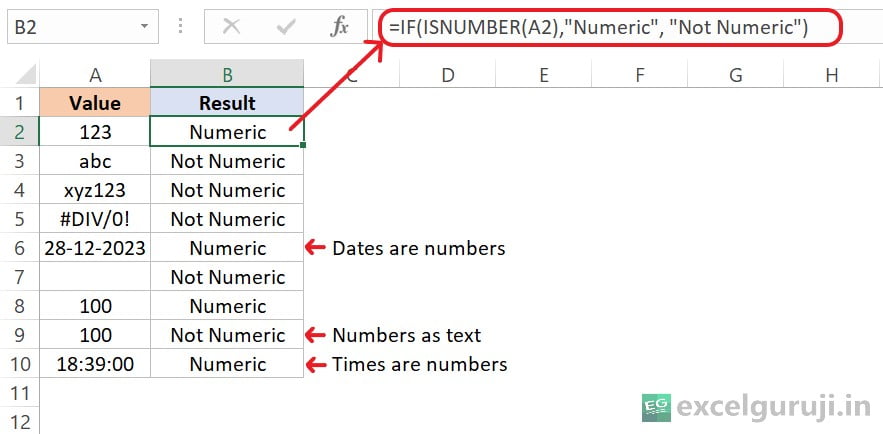
This formula will display “Numeric” if the value in cell A1 is numeric and “Not Numeric” otherwise.
Example 3: Count Numeric Cells
The formula =SUMPRODUCT(–ISNUMBER(A2:A10)) in Excel is used to count the number of cells within the range A2:A10 that contain numeric values.
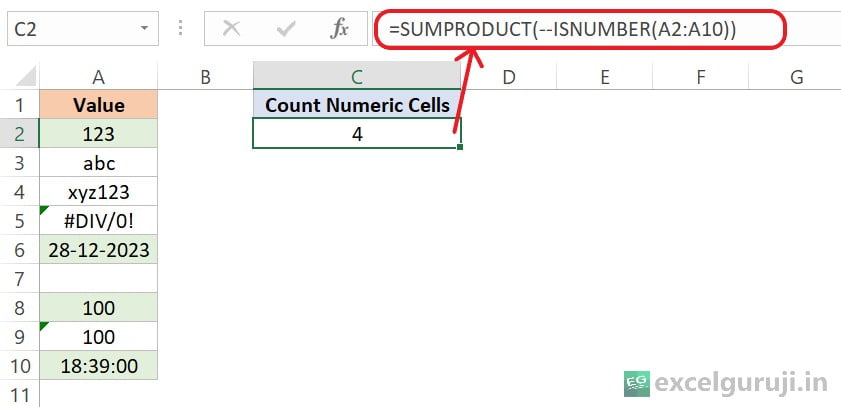
Let’s break down the formula:
- ISNUMBER(A2:A10): This part of the formula checks each cell in the range A2:A10 and returns an array of TRUE for cells containing numeric values and FALSE for cells with non-numeric values.

- — (double unary operator): This is a conversion operation that turns TRUE into 1 and FALSE into 0. It coerces the TRUE/FALSE array into an array of 1s and 0s.

- SUMPRODUCT: This function then adds up the values in the resulting array. In this context, it effectively counts the number of cells in the specified range that contain numeric values.
So, the overall purpose of the formula is to provide a count of how many cells in the range A2:A10 contain numeric values.
Example 4: Applying ISNUMBER in Data Validation
Suppose you wish to restrict cells A1 to A10 to accept only number content, preventing the entry of text or other non-number data. In such cases, you can utilize the ISNUMBER function in data validation, as demonstrated below:
- Select the range A1:A10.
- Go to the Data tab and click on Data Validation.
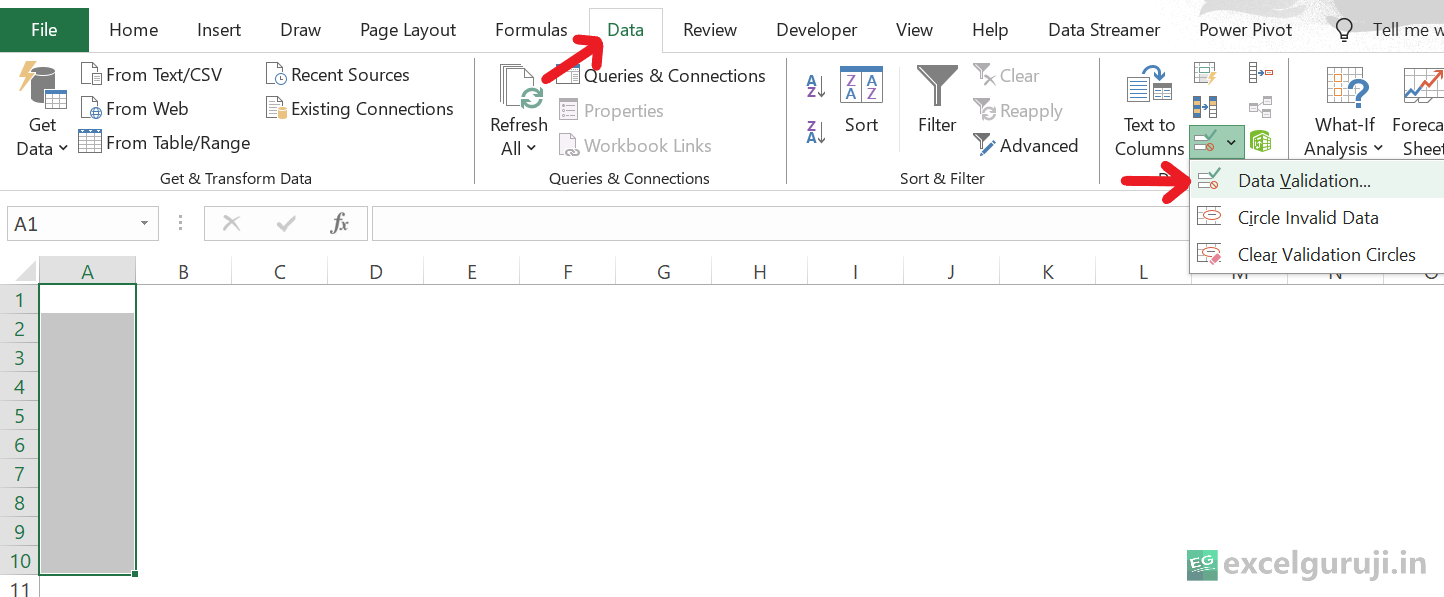
- Choose Custom as the validation criteria.
- Enter the formula: =ISNUMBER(A1)
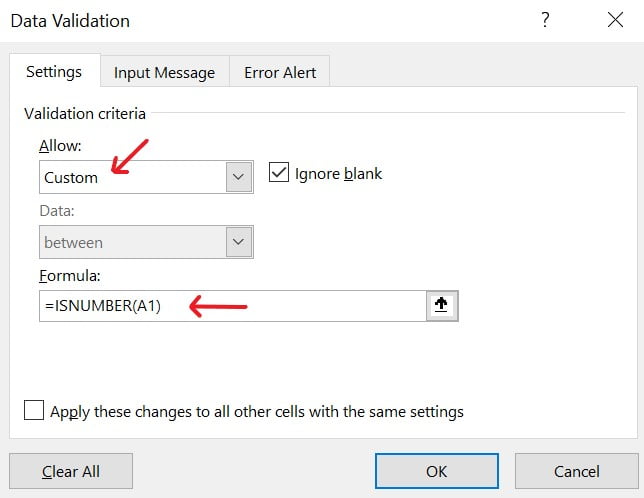
- Now, only cells containing number will be accepted in the selected range. As depicted in the image below, number input is accepted in cell A1; however, when attempting to input a text in cell A2, a restriction message is displayed.
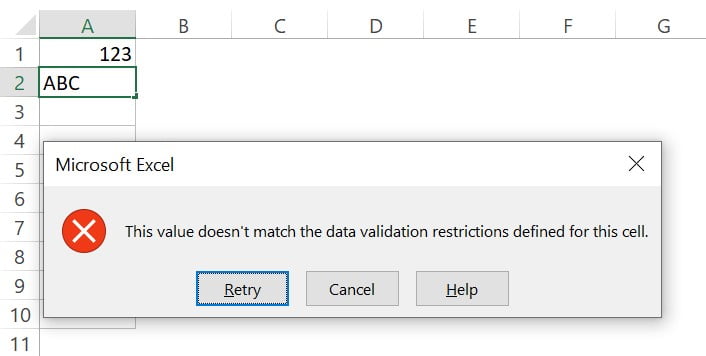
Practice Workbook
There are two sheets in practice file
Download Free Excel File For PracticeConclusion
In conclusion, the Excel ISNUMBER function is an essential tool for validating and assessing the nature of data in your Excel worksheets. Whether you are working with datasets of various types or performing calculations that require numeric inputs, ISNUMBER can streamline your workflow and enhance the accuracy of your analyses.
Remember, Excel proficiency grows with hands-on experience, so don’t hesitate to incorporate the ISNUMBER function into your projects and explore its diverse applications. Start utilizing the ISNUMBER function today to enhance your Excel skills and make data validation a breeze!
Frequently Asked Questions (FAQs)
Q1: Can the ISNUMBER function identify both integers and decimal values?
A1: Yes, the ISNUMBER function can identify both whole numbers and decimal values, providing a versatile solution for numeric data validation.
Q2: Can ISNUMBER be used with formulas?
A2: Yes, ISNUMBER can be applied to verify if the result of a formula is a numeric value, providing flexibility in handling calculated data.
Q3: How can ISNUMBER contribute to data analysis?
A3: By using ISNUMBER, you can efficiently filter or categorize data based on its numeric nature, facilitating accurate data analysis and reporting.
Q4: What does ISNUMBER return if the specified value is not numeric?
A4: If the specified value is not numeric, ISNUMBER returns FALSE.
Other Related Excel Functions
Mastering Excel ISBLANK Function: A Comprehensive Guide for Efficient Data Analysis
Excel ISERROR Function: A Guide to Mastering Error Detection
Join me on Instagram, YouTube and WhatApp Channel for your daily dose of valuable tips and tricks! Catch insightful videos that will enhance your knowledge and skills. Don’t miss out – follow me now!